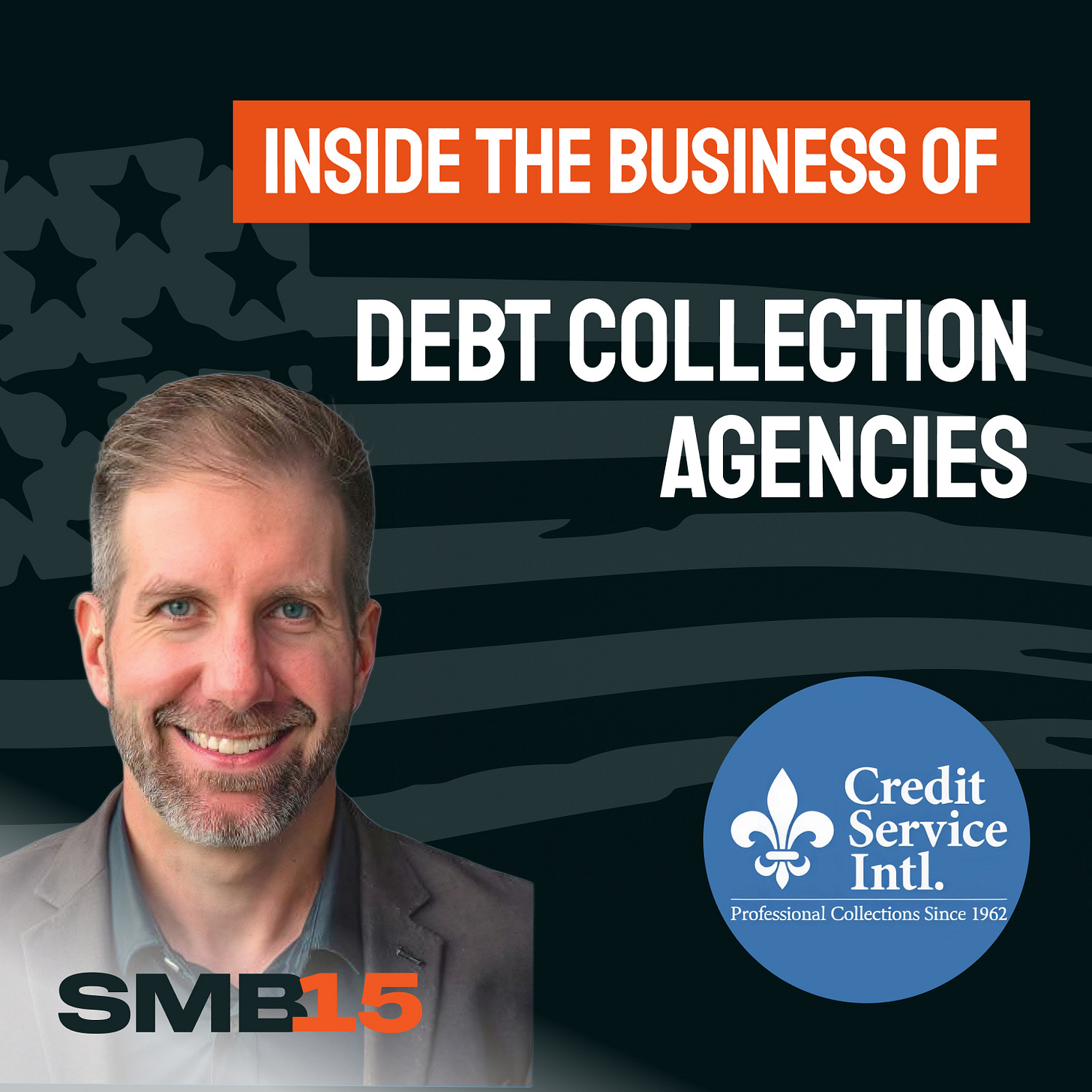Listen now on Spotify or YouTube.
John started in debt collections right out of college. Staked by his former boss in his late 20s to buy his first agency, he's spent the last two decades quietly scaling in a misunderstood industry. Today, he runs a national network of 16 collection agencies serving hospitals, banks, and utilities across the country.
In this interview, we go deep on what most people don't understand about the collections business: the economics, the sales cycle, how compliance and customer service intersect, and how his firm consistently collects 2x the industry average.
Some takeaways:
Collections keeps costs low. In 2018, the industry returned $90.1B to American businesses, saving the average household $706 due to lower costs and services. Without the collections industry, the cost of goods and services would skyrocket. Businesses would have to charge more in order to offset the percentage of customers who do not pay.
Competing on service, not price. John stands out from competition by his approach to servicing files. “We approach it as they're going to be a customer of our client again,” he said. And in all likelihood, they will. Unless they move, they’ll go back to the same hospital, use the same utility company. This approach, combined with technology, allows John to deliver 2x the industry collection rate.
Workflow automation drives margins. After a file is received, John processes it to determine everything from “who’s died since they received an invoice” to “who’s likely to be litigious”. After the file has been processed, the next step is to determine the outreach channels that are most likely to drive a payment.
Clients provide general guidance, but the agency has a voice. Clients will often provide their financial assistance policies and settlement options to an agency, but the agency can escalate specific accounts to negotiate a settlement that works for both parties.
Larger clients may have agencies compete. Some will split the alphabet and send different batches of files to different collections agencies based on name. Others will test sequencing, with certain agencies focused on the first pass and others focused on a second pass.
Consolidation in hospitals drove a lot of the early acquisitions. A few decades ago, there was an independent hospital and mom-and-pop collection agency in many small towns. As hospital systems slowly started consolidating, many of these agencies lost their main customer. John would buy the agency to service out remaining accounts, similar to a stripper well in the oil & gas business.
John treats every acquisition as an opportunity to learn. Despite having a mature playbook, John says he learns something valuable from each new acquisition. Staying humble, curious, and open to process improvements has been key to growing Credit Service Intl and being a partner that sellers want to work with.
Where to find John and Credit Service Intl:
Website: https://achievecontact.com/
In this interview, we discuss:














Share this post